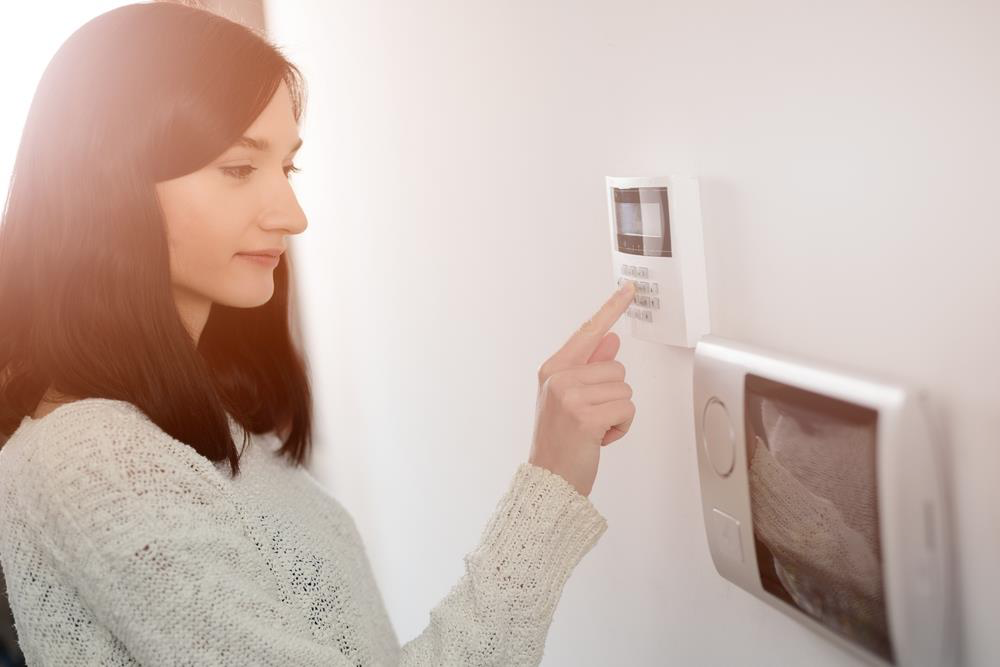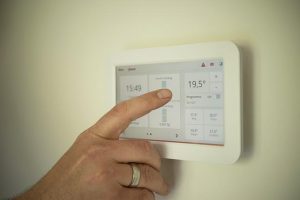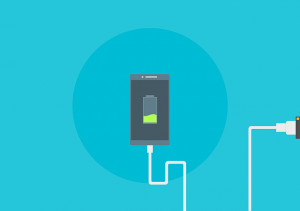How Smart Home Technologies Change Home Security
- March 31, 2022
- by Ezlo Admin
Learn how a new generation of IoT devices can protect our homes.

Multiple home theft studies show that the first reason why burglars target a specific property is ease of accessibility. In addition, if they can’t get into your apartment within the first 15 minutes, they will most probably abandon it (according to this research).
So if you want to have your home protected, you’ll be wondering how to make a possible intrusion as complicated as possible, and how you can stop the burglars, if they eventually manage to enter your apartment.
Decades ago, you could only install an expensive security system that had a lot of disadvantages:
- It used a landline to notify the police about a theft in action. Not only could burglars discover the wire and cut it, such a system would also be vulnerable to power outages or thunderstorms.
- Not every security system included a surveillance camera, which made it nearly impossible to find the thieves in case they manage to escape before the police arrived.
- The systems with cameras were also far from perfect. The cameras had no remote access option, would record only a limited amount of video on to a tape and in general often had poor quality.
Nowadays the situation has changed dramatically.
First, all devices went electronic and wireless. With these, burglars would also need to be hackers in order to note them, disable them and break in.
Second, they’re now much cheaper, which is one of the top reasons why most forecasts on home automation are so positive. If you can protect your home for $50-$100, why not?
Finally, smart home technologies offer new ways to either prevent the theft or to learn about it as quickly as possible.
Three ways to prevent or stop home theft
1. Surveillance cameras
Modern cameras can record video 24/7 and save it onto a cloud storage for later access. Some have built in motion sensors to launch video recording and send you a notification if something suspicious happens in sight.
Such cameras cost $150-$200 and are a great start for most new homeowners. Besides, if you can install them outside your home, on your terrace or an entryway, its presence alone can deter burglars from spontaneous thefts.
2. Smart sensors and plugs
Even if burglars manage to sneak into your house and you don’t have cameras to spot and record them, your smart home devices can help you out. The sensors can notify you if an unusual motion is noticed, or if somebody opened the door or the windows, or switched on your smart lights. And if you have smart plugs, they can also notify you about unexpected power consumption.
With such information available immediately, you can either drive home to check what’s up or, more preferably, call the police.
3. Activity imitation
Many anti-theft guides also recommend doing everything to avoid the burglars figure out that you left your house or apartment for long. For instance, you can ask your close ones or neighbors to pick up the mail or trim a lawn for you.
Modern home automation systems allow for a mode that imitates your presence even if you’re out. One of the most widespread options is using smart lights for that. The simplest option is to switch them on and off every now and then remotely via your smartphone. Some advanced solutions can also learn your habits and follow them automatically for an even better result when you depart for a few days.
Of course, you can also turn on your stereo system or a TV to improve the effect of presence even more.
And there’s more to come
While startups are looking for more ways to protect your home with smart devices, it’s already obvious that for some technologies it is only a matter of time before they appear at your home.
For instance, fingerprint technology has been widely adopted in smartphones. In a few years, your fingerprint might be an additional way to get inside your home. And don’t forget about existing smart locks that can require your smartphone to let the door open and thus stop amateur burglars.
In 2010 the New York Times wrote about Robert Oschler, who made a robot. That robot, apart from moving around and surveying the home, could also tell the intruders ‘Get out of there. I’m calling the police,’ which may also help prevent the theft. Today, you can set up modern voice assistants to do a similar thing in case sensors will notice unexpected behavior.
In the end, as security measures get more and more advanced, the devices themselves still remain vulnerable, though not for burglars, but for hackers. Regular news about successful hacks and stolen data don’t surprise anyone anymore. So before improving your home protection with cutting-edge solutions make sure the manufacturers guarantee their hack resistance and check out tips on improving their protection.
Related Resources:




